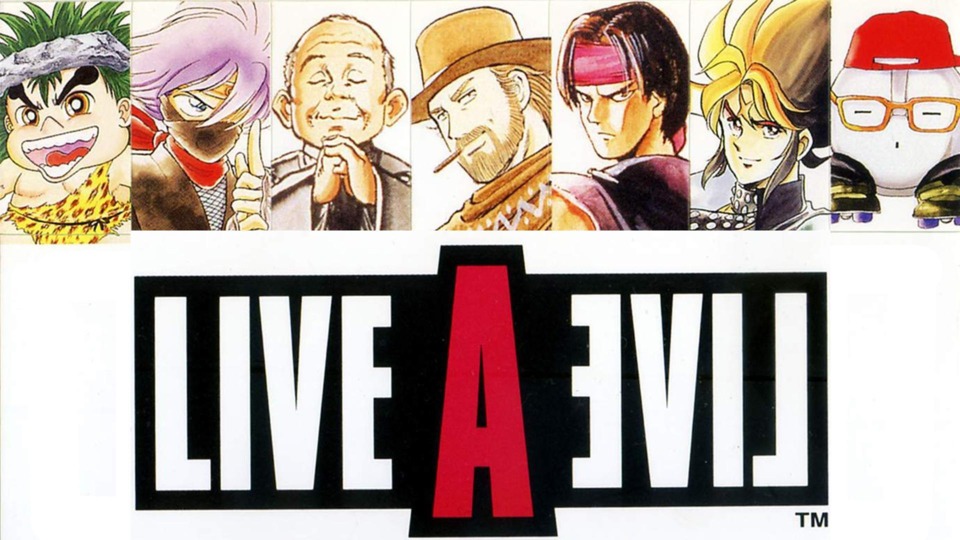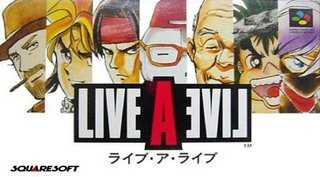Unleashing Timeless Stories on the Super Famicom

In the vast landscape of Super Famicom RPGs, Live A Live stands as a unique gem, often overlooked in the shadows of more celebrated titles like Chrono Trigger and Final Fantasy VI. Developed by Squaresoft (now Square Enix) and released in 1994, Live A Live weaves an intricate tapestry of storytelling, innovative gameplay mechanics, and an ambitious narrative structure that sets it apart from its peers.
One of the standout features of Live A Live is its unconventional narrative structure. Instead of presenting a linear story, the game is divided into seven distinct chapters, each with its own protagonist, setting, and time period. From a prehistoric caveman to a futuristic sci-fi setting, the diversity of scenarios is both impressive and refreshing. This narrative approach not only showcases the developers' creativity but also provides players with a sense of unpredictability, as each chapter unfolds with its own unique twists and turns.
The interconnectedness of the chapters becomes apparent as players progress through the game. While initially seeming like standalone stories, the threads of fate gradually intertwine, leading to a final chapter that ties everything together in a satisfying and unexpected manner. This narrative technique adds layers of complexity to the storytelling, keeping players engaged and eager to uncover the overarching mysteries that connect the characters and their destinies.
Live A Live excels in character development, considering the limited resources and technology of its time. Each protagonist is meticulously crafted with a distinct personality, motivations, and a character arc that evolves over the course of their respective chapters. The game's ability to evoke empathy for characters within the constraints of a 16-bit RPG is a testament to the storytelling prowess of the developers.
Notably, the choice of protagonists spans a wide range of archetypes, from the traditional hero to the anti-hero, providing a rich and varied experience. Whether players find themselves in the shoes of a silent assassin, a cowboy seeking revenge, or a martial artist in feudal Japan, the diversity of characters contributes to the game's overall appeal. Furthermore, the moral ambiguity of certain characters adds depth to the narrative, challenging players to question their own preconceptions about heroes and villains.
Live A Live introduces innovative gameplay mechanics that set it apart from the standard turn-based RPG formula. The game features a grid-based battle system, reminiscent of tactical RPGs, where characters can move within a designated area during combat. This adds a strategic element to battles, requiring players to consider positioning, terrain, and each character's unique abilities.
The game's Flow system is another noteworthy addition, allowing players to allocate points earned in battles to enhance specific attributes such as attack power, defence, and agility. This customisable approach to character progression provides a sense of agency, allowing players to tailor their party members to suit their preferred playstyle.
Each chapter introduces a new set of characters with their own distinct abilities and playstyles, ensuring that gameplay remains fresh and engaging throughout. The variety of scenarios also keeps players on their toes, as they adapt to different challenges presented by the diverse cast of enemies and environments.
Live A Live boasts a charming 16-bit aesthetic that captures the essence of the Super Famicom era. The sprite work is expressive, and the environments are detailed, immersing players in the various time periods and settings. The game's art direction shines in its ability to convey a wide range of emotions, from the intensity of battle to the quiet moments of reflection.
The soundtrack, composed by Yoko Shimomura, is a masterclass in 16-bit music. Each chapter is accompanied by a thematic score that complements the setting and enhances the emotional impact of key moments. From the haunting melodies of the horror-themed chapter to the upbeat tunes of the sci-fi adventure, the soundtrack is a standout element that elevates the overall experience.
While Live A Live excels in many aspects, it is not without its challenges. The non-linear structure, while innovative, may pose a barrier for players accustomed to more straightforward narratives. Some may find switching between disparate time periods and characters initially disorienting. However, the payoff for those who persist is a narrative mosaic that rewards careful attention and exploration.
Pacing can be uneven in certain chapters, with some feeling more rushed or prolonged than others. This inconsistency may impact the overall flow of the game for some players. Additionally, the learning curve of the grid-based battle system might be steep for those unfamiliar with tactical RPG mechanics, potentially leading to frustration early in the game.
Live A Live remains a cult classic among retro gaming enthusiasts, cherished for its narrative innovation and diverse gameplay mechanics. Its impact can be seen in later titles that experimented with non-linear storytelling, such as the SaGa series and, to some extent, the Chrono Cross sequel.
Despite being a Japan-exclusive release for the Super Famicom, fan translations have allowed a wider audience to experience the game in English. The dedication of the fan community speaks to the enduring appeal of "Live A Live" and its status as a hidden gem in the RPG genre.
Live A Live is a testament to the creativity and ambition of game developers in the 16-bit era. Its unconventional narrative structure, rich character development, and innovative gameplay mechanics set it apart from its contemporaries. While not without its challenges, the game's unique storytelling approach, charming visuals, and memorable soundtrack make it a must-play for fans of classic RPGs.
In the tapestry of Super Famicom RPGs, Live A Live stands as a vibrant thread that, once unravelled, reveals a mosaic of interconnected stories that transcend the limitations of its time. It may not have received the widespread recognition of some of its peers, but for those who venture into its world, Live A Live is an unforgettable journey through time and storytelling innovation.
